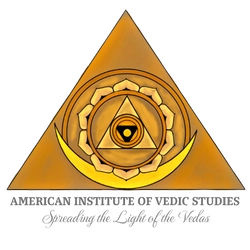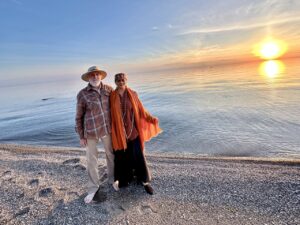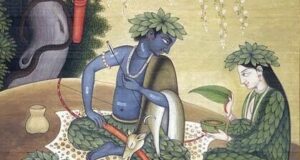Global Esoteric Traditions
Esoteric, mystical, and occult traditions have been widely connected worldwide as far back as we can trace their history. These secret teachings include the realms of healing, astrology and alchemy, extending to Yoga, mantra, and meditation, emphasizing internal practices to raise us to higher states of consciousness. These have been important in European traditions, going back to the most ancient times, though usually outside the boundaries of orthodox religions.
Such esoteric groups formed secret societies, particularly in European and Middle Eastern countries where they faced extensive oppression by religious authorities, particularly in the Middle Ages They often deliberately veiled their teachings in symbols and hid their identity and associations, retiring from the world or public scrutiny, forming communities of their own.
In many ways they resemble the teachings of India, Tibet and the Himalayan region. This is because these regions honored freedom of spiritual practice and maintained an unbroken continuity of esoteric teachings of Yoga and meditation.
Spread of the Higher Teachings
Many esoteric teachings were transmitted overland along the Silk Trail, which began in China and went to the north of Tibet and India, picking up Himalayan influences. This was the primary route how Buddhism entered into China two thousand years ago. The Silk Trail was part of other land routes from India and the Himalayas, including south through Iran or north of the Black Sea that brought these traditions into Eastern Europe.
Another important route was the Spice Trail from South India by sea, which went both to Europe through the Middle East on the western side and to China on the east. Hinduism and Buddhism spread to Indonesia, Indochina and East Asia along this path. Teachings moved to the Middle East, North Africa and Europe by western maritime routes largely through the Persian Gulf.
Extensive trade existed between India and the Greco-Roman world, including a movement of teachers and teachings from the most ancient period. Plotinus (third century AD) – perhaps the most important mystic philosopher of later Rome and who strongly impacted Christian mysticism and the Sufis – was said to have visited India. Another important example was Apollonius of Tyana (first century AD), who visited India and carried on Pythagorean traditions that included vegetarianism and a belief in reincarnation.
Migratory movements of peoples allowed for the spread of esoteric teaching and meditation practices. There was a spread of peoples along the land route from India and Afghanistan through Central Asia, the Pontic steppes, and into Europe since the dawn of history. From Afghanistan – itself a Hindu and Buddhist kingdom until a thousand years ago – were ancient trade and migration routes to the Volga, around the Black Sea and to the Danube going back many thousands of years.
Indo-Iranian Influences in Ancient Europe
The main peoples who dominated Eastern Europe in ancient times were Iranian groups with ties to Afghanistan and India. These Northern Iranian groups were older than the Persian Zoroastrian traditions, and culturally different, reflecting teachings more like the Vedas of India.
Ancient Iranian peoples like the Thracians, Scythians and Sarmatians dominated Eastern Europe and the Balkans from well before 1000 BCE to nearly 500 AD. The Thracians were the most numerous people in ancient Europe according to the Greeks. Indeed the oldest cities and gold work in Europe are sites in Bulgaria going back to before 4000 BCE, like Plovdiv and Varna. Perhaps these were ancient Thracian sites.
The Greek Orphic tradition arose from the Thracians and strongly influenced Greco-Roman esotericism. The Dionysian tradition, later very popular among the Greeks, was also connected to the Thracians. Dionysus resembles Hindu deity Shiva. Such traditions believed in rebirth and sought higher states of consciousness and ecstasy through music and chanting.
The Scythians followed after the Thracians. The Scythians were enemies of the Persians as Central Asian and Eastern European Iranian peoples that had their own distinct culture. Scythian kingdoms dominated Central Asia from 1000 BCE or earlier up to the eighth century AD. Greater Scythia extended from the Danube (Scythia Minor) to the Pontic Steppes (Scythia Major) and to North India and the Tarim Basin now in China. The Scythians and related peoples ruled parts of North India and Central Asia up to the early centuries AD, with Indo-Scythian, Indo-Greek, Kushana and Huna kingdoms that had associations both with India and with their European counterparts.
Central Asian Scythian kingdoms followed Buddhist, Hindu, Zoroastrian, and Manichean influences, as well as their own indigenous traditions. The worship of Shiva and his son Skanda was common among them and frequently found upon their coins. Turkish and Mongolian groups in the region also adapted similar esoteric teachings as part of their worship of Tengri, their great deity of the Sky and the mountains, and their adaptation of Buddhism and Hinduism. Genghis Khan worshipped Tengri, for example.
Pagan and Esoteric Traditions
Ancient European pagans as a whole, notably the Celts and their Druids, had esoteric traditions in Western Europe throughout long history, with influences from the East, including a belief in rebirth, the use of philosophy, astrology and yoga like practices.
There was a common extensive esoteric tradition in the ancient world that seems to become stronger the further back we go in time, which was gradually displaced and submerged with the onset of Christianity, though mystical Christianity borrowed much from it.
These esoteric traditions developed into secret societies. We find Hermetic, Gnostic, Manichean, and Zoroastrian influences common in esoteric traditions of Europe extending into the Middle Ages. The Manicheans, a religious group from Syria, also honored Buddha rebirth, and Ganesha and spread as far as China, had a strong influence on Europe. There were special crusades in Europe against such mystical and pagan groups like the Bogomils and Cathars from Bulgaria to France, which had Manichean and Gnostic influences.
Meanwhile older pagan traditions survived in Europe until the fourteenth century or longer, particularly in the Baltic region, notably Lithuania, which were the subject to brutal crusades against them by the Teutonic Knights. In many countries of Europe from Ireland to Russia older pagan traditions have survived in hiding, in the background, or by adopting Christian forms and symbols.
The Renaissance in Europe included bringing back older pagan ideas and esoteric traditions, including Hermetic and Neo-Platonic ideas extending to reincarnation. Unfortunately, the mystical and astrological side of the Renaissance teaching was soon suppressed by the church.
The Mongols under Genghis Khan and the Golden Horde had Buddhist, Taoist and Shamanic influences that reached Europe and Iran starting in the thirteenth century. The Golden Horde ruled the Eastern European region as far as the Danube for several centuries, only later adapting Islam.
Alchemy, magic and astrology were common esoteric traditions up to the eighteenth century, with connections worldwide including China, India, the Middle East and Europe. The Gypsies, who came from India around a thousand years ago, brought many esoteric teachings as well as music and dance.
Such esoteric connections increased after the nineteenth century with the Theosophical movement that spread throughout the globe, and with the travel of great Yoga gurus to the West starting with Swami Vivekananda at the turn of the twentieth century.
Today there is a large group of neopagan traditions in Europe and America, from Celtic, Slavic, Baltic, and Germanic backgrounds, as well as renewed interest in Greco-Roman and Hellenic traditions extending to ancient Egyptian and Babylonian traditions, and indigenous traditions in the world overall. This group is increasing as the interest in orthodox Christianity declines.
Esoteric Hinduism (Yoga and Vedanta) as a Point of Synthesis
Probably the oldest and most extensive esoteric tradition is that of Hinduism or Sanatana Dharma, the Eternal Tradition. Hinduism is the world’s largest and oldest pagan and pluralistic tradition, with Yoga, Tantra and Veda enshrined within it as a treasure house of cosmic knowledge.
Yoga and Vedanta preserve the deeper essence behind such mystical, philosophical and healing traditions. They direct us to the highest Self-realization, not simply to occult powers or powers of the mind. In addition, they connect us to the Vedic sciences of Ayuurveda, Vedic astrology, Vastu and the Sanskrit language overall and its mantric powers.
In dharmic traditions, there is a recognition of many cycles of civilization, of which ours is not the first or the highest, and is still lacking in the deeper knowledge that the ancients held.
Today we are entering into a new planetary age in which we can understand how such esoteric traditions can link us with the cosmic mind and our inner Self. It is important to reclaim these older esoteric traditions and practice them again. There is a secret light of higher knowledge hidden within them, which needs to be reclaimed. Such esoteric traditions offer individual spiritual experience and enlightenment that helps us go beyond the limitations of organized religions. They encourage our search for inner freedom and Self-realization, which is the real goal of life and culture.
David Frawley (Vamadeva Shastri)








